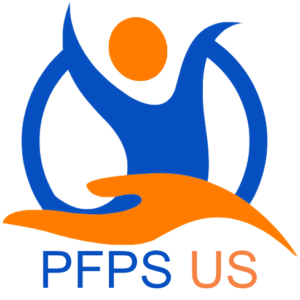
A new patient advocacy group has been aggressively pushing policymakers in Washington to focus on patient safety.
The group, Patients For Patient Safety US (PFPS US), was founded in June 2021 by 10 experienced advocates who say government and industry have dropped the ball on efforts to make care safer.
Threats such as the pandemic, health disparities and the opioid crisis “should not be competing with safety on the federal health agenda,” one of the founders, Martin Hatlie, told an audience at Health Journalism 2023.
Patients for Patient Safety US isn’t a household name like Consumers Union (now Consumer Reports), which ran the Safe Patients Project from 2003 to 2018. That effort promoted reforms focused on public reporting and provider accountability, including landmark measures in the 2010 Affordable Care Act.
Another difference is that PFPS US says it selectively welcomes ties with provider groups, whereas the Safe Patient Project eschewed contributions from industry.
It remains to be seen whether PFPS US’s work will achieve lasting policy wins, but it has made inroads with the Biden administration and invigorated a patient safety movement that appeared to be waning.
Here are some things to know about the group.
Formation and philosophy
One of the founders, Sue Sheridan, said she got angry at the scant mention of patient safety in a draft strategic plan for the National Quality Forum, a large not-for-profit membership organization that promotes patient protections. She said she reached out to fellow “lifetime warriors” in patient safety who had noticed similar lapses elsewhere.
They formed a branch of the World Health Organization’s Patients for Patient Safety program, which Hatlie and Sheridan had helped to develop. The program aims to bring patient voices into national policymaking and to promote collaboration among activists of different countries.
Sheridan said the WHO’s Global Patient Safety Action Plan calls for an expansive role for patients and families as watchdogs along with “active participation” by government, which the United States’ own National Action Plan does not.
Funding and conflicts of interest
I didn’t find a list of contributors on PFPS US’s website, so I asked Hatlie and Sheridan to provide some information about its policies.
They said that all of the founders contributed money to start the group. According to LinkedIn, some founders have relationships with health care provider organizations as consultants or employees.
PFPS US also accepts money from its partner organizations and individual supporters, Sheridan said. (Sheridan said the group took a donation from the Gordon and Betty Moore Foundation to create a webinar series. The Moore foundation is also an AHCJ funder.)
Sheridan said that PFPS US’s agenda is “patient generated,” adding that its partner organizations must support its mission and, in the case of private entities, the WHO’s patient safety action plan.
Still, some of its financial backers could have vested interests in which policies are pursued and how they are crafted and executed. PFPS US’s partners include the MedStar Institute, which is affiliated with MedStar Health, a Maryland-based hospital system; the Patient Safety Movement Foundation, which was founded by medical technology mogul Joe Kiani; and the American Academy of Pediatrics, which represents pediatricians.
PFPS US’s practices contrast with the strict conflict-of-interest safeguards of the Safe Patient Project, which did not accept donations–or even lunch money–from physician or hospital organizations, said Lisa McGiffert, its former director. McGiffert is now the president of another advocacy group, the Patient Safety Action Network, which she said doesn’t take industry cash.
Journalists who plan to include PFPS US in a story should ask about any financial relationships that might pose an actual or perceived conflict of interest regarding the issue they’re reporting on.
Policy priorities
One of the group’s first actions was to pressure U.S. Department of Health & Human Services Secretary Xavier Becerra to put patient safety on his agency’s strategic plan. When they didn’t get a response, Sheridan said, three members of the group published an editorial in the Journal of Patient Safety and Risk Management.
The pressure tactics may have had an effect. In November, Becerra convened the National Action Alliance to Advance Patient Safety, a public-private collaborative among the Centers for Medicare & Medicaid Services (CMS) and large hospital systems. PFPS US was also invited to join a working group of the President’s Council of Advisors on Science and Technology and dispatched speakers to discuss reforms at the 2023 CMS Quality Conference.
Here are a few of PFPS US’s agenda items:
- Making communication and resolution programs, such as CANDOR, a standard of care.
- Establishing a federal entity to coordinate patient safety.
- Expanding public reporting of safety events.
- Creating a national portal for anyone to report incidents.
- Adding patient safety questions to CMS’s HCAHPS, a standardized national consumer survey on hospital care.
- Eliminating confidentiality agreements in liability settlements.
The group also endorses enforcement of existing laws to hold provider organizations accountable, Sheridan said. In May 2022 it petitioned the HHS Office of the Inspector General to investigate whether Vanderbilt Medical Center committed Medicare fraud in covering up a patient’s death due to a medication error, and whether CMS and the Tennessee health department responded appropriately.
Contact information
Reporters can contact PFPS US Co-Founder Sue Sheridan at 208-867-3479 or ssheridan@pfps.us.








